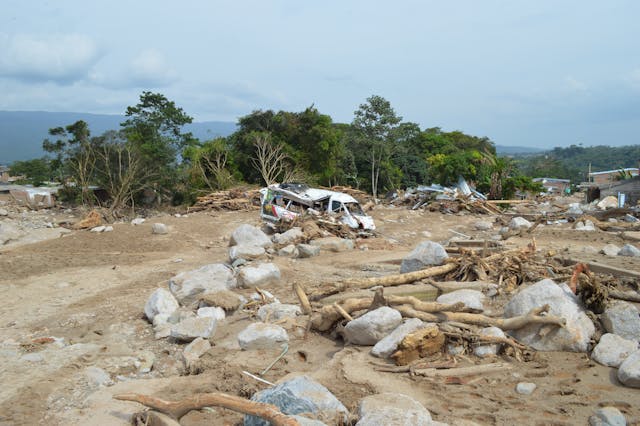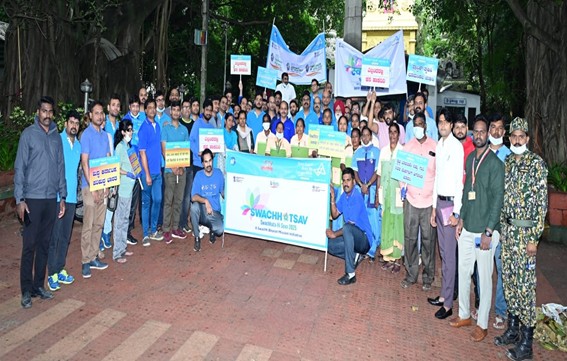
Pic Credit: Pexel
Introduction to India’s Landslide Crisis
India is home to diverse geographic, climatic, and geological features, all of which contribute to the occurrence of natural disasters such as landslides. These events have increasingly intensified against the backdrop of severe weather patterns, particularly during the monsoon season. The month of September 2025 marked a significant escalation in the landslide crisis, especially in the states of Odisha and Uttarakhand, where ongoing rainfall facilitated multiple landslides, inflicting extensive damage to infrastructure and displacing countless individuals.
The monsoon season brings heavy rainfall to various regions in India, which can saturate the soil, enhance erosion, and ultimately lead to landslide occurrences. Particularly in hilly areas, the combination of steep slopes and loose, wet soil creates a precarious environment where natural calamities can strike with little warning. Geological factors, including the region’s geological composition and past occurrences of landslides, further exacerbate these risks. Climate change has also played a pivotal role in this crisis, as unpredictable weather patterns increase the frequency and severity of monsoon-related disasters.
While Odisha and Uttarakhand have unique geographic characteristics, both share vulnerability to landslides. In Odisha, the vast coastal belt experiences not only heavy rainfall but also cyclonic storms, which can significantly contribute to worsening land conditions. Conversely, Uttarakhand, nestled in the Himalayas, faces threats due to its steep mountain terrains, combined with frequent earthquakes and glacier melt. As these geological and climatic challenges continue to converge, a pressing humanitarian crisis emerges, requiring urgent attention to preventive measures and risk management strategies.
Monsoon Season Patterns and Their Effects
The monsoon season in India is a critical period characterized by heavy rainfall and is crucial for replenishing water resources and supporting agricultural activities. Occurring typically between June and September, the southwest monsoon is the primary source of precipitation for many regions in the country. In 2025, meteorological conditions during the monsoon season have shown significant anomalies, leading to excessive rainfall that has heightened the risks of landslides, particularly in states like Odisha and Uttarakhand.
Excessive rainfall can saturate the soil, making it unstable and prone to erosion, especially in hilly and mountainous terrains. This phenomenon was particularly evident in 2025 when states such as Uttarakhand experienced unusual weather patterns, including prolonged cloudbursts that resulted in disastrous landslides. The intensity and frequency of such rainfall events have raised concerns among scientists who are monitoring climate changes and their implications for disaster management strategies.
Furthermore, Odisha, known for its vulnerability to both cyclones and heavy monsoon rains, faced challenges during this period. While the state usually relies on monsoon rains for its agricultural needs, the excessive precipitation in 2025 caused significant disruptions. Crop loss and soil erosion have ensued as a result of the waterlogged conditions, undermining food security for many local communities.
These meteorological extremes highlight the dual nature of the monsoon, serving both as a lifeline and a potential threat. As we delve deeper into understanding the relationship between monsoon patterns and natural disasters, it becomes clear that the increasing trend of heavy rainfall events poses significant challenges for disaster preparedness and response in India. The government and relevant authorities must enhance their focus on effective monitoring and risk management strategies to mitigate the adverse impacts of such natural calamities in the future.
Regions Most Affected: Focus on Uttarakhand
Uttarakhand, a state in northern India, has frequently been subject to geological shifts and extreme weather patterns, making it particularly vulnerable to landslides. The state’s unique topography, characterized by steep hills, deep valleys, and fragile soil structures, exacerbates its susceptibility to such natural disasters. In September 2025, an unprecedented series of landslides struck the region, leading to significant destruction and loss of life.
Recent incidents have highlighted the acute risk faced by local communities. In the month of September alone, multiple landslides were reported across various districts, including Chamoli, Tehri Garhwal, and Pauri Garhwal. These events have been attributed to heavy monsoon rainfall, which saturates the soil and increases instability on the slopes. Reports indicate that entire villages were buried under debris, isolating survivors and obstructing rescue and relief operations. The rapid occurrence of these phenomena underscores the urgent need for effective disaster preparedness strategies.
The human toll of the landslides has been devastating. Preliminary estimates suggest that hundreds of families have been displaced, with many missing or fatally injured. The psychological impact on survivors is profound, as they grapple with the loss of homes and livelihoods. The devastation extends beyond individual losses; local infrastructure has suffered significant damage. Key roads have become impassable, hampering transportation, emergency responses, and access to essential services. This disruption not only affects daily life but also poses long-term challenges for economic recovery.
In light of these challenges, it is crucial for governmental and non-governmental organizations to collaborate on comprehensive disaster management initiatives. This should include improving early warning systems, enhancing community awareness, and reinforcing infrastructure against future landslides. Such measures are essential to mitigate the impacts of landslides in Uttarakhand and ensure the safety and resilience of its communities.
Odisha’s Struggles with Landslides
The month of September 2025 marked a significant escalation in the landslide crisis faced by the state of Odisha, revealing the region’s vulnerabilities to natural disasters. The primary causes of these landslides stemmed from heavy monsoon rains, exacerbated by deforestation and soil erosion, which have destabilized the landscape. The steep terrain of certain districts, coupled with inadequate drainage systems, made them particularly susceptible to landslides, leading to catastrophic consequences for local communities.
In response to the mounting crisis, the Odisha government launched emergency measures aimed at disaster management. Search and rescue operations were initiated promptly, mobilizing local authorities and national disaster response teams. However, logistical challenges hindered efforts, particularly in remote areas where fallen trees and debris obstructed access routes. The swift establishment of shelters was imperative, providing displaced individuals with temporary housing and essential supplies. Despite these efforts, the scale of destruction and the emotional toll on affected families underscored the difficulties faced by officials and volunteers alike.
The impact on local populations was profound, as continued landslide activity led to significant loss of property and disruption of livelihoods. Many residents relied on agriculture, but damaged fields and blocked access to markets severely hampered their ability to engage in economic activities. The trauma of losing homes and loved ones, compounded by the uncertainty of future landslides, has created a challenging environment for recovery. Efforts at rebuilding and rehabilitation are ongoing, but the psychological scars and economic hardships faced by the communities involved contribute to the long-lasting effects of the landslide crisis. Thus, Odisha continues to grapple with its vulnerabilities to natural disasters, pushing for improved infrastructure and disaster preparedness in hopes of mitigating future risks.
Government Response and Preparedness
The landslide crisis that unfolded in September 2025, particularly affecting the regions of Odisha and Uttarakhand, prompted significant actions from both local and national government agencies. In anticipation of the monsoon season, the governments had implemented several disaster preparedness measures aimed at minimizing the impact of such natural calamities. Annual assessments of vulnerable zones, focused training programs for local disaster response teams, and community engagement initiatives were some of the strategies in place to elevate preparedness.
Prior to the onset of the monsoon, the government had rolled out the National Policy on Disaster Management, which outlines a comprehensive framework for response and recovery in the face of such emergencies. This included investment in infrastructure improvements, like the reinforcement of roads and drainage systems in prone areas, as well as the establishment of early warning systems. These systems played a crucial role during the landslides, providing timely alerts to communities at risk. However, despite these measures, the overwhelming severity of the crisis demonstrated that existing policies needed reevaluation and enhancement.
In the immediate aftermath of the landslides, government agencies launched coordinated response efforts, involving the National Disaster Response Force (NDRF), local police, and volunteer groups. Efforts included search and rescue operations as well as the establishment of temporary relief camps for displaced populations. However, reports indicated challenges in the effectiveness of these strategies, as inadequate infrastructure and logistical issues hampered swift response. Additionally, the need for seamless communication between various levels of government became apparent, highlighting the areas of improvement necessary for future disaster management strategies.
In conclusion, while some preparedness measures were successfully executed, the landslide crisis in India in September 2025 underscored the necessity for robust policies and enhanced coordination among government agencies to effectively mitigate such disasters in the future.
Impact on Infrastructure and Economy
The recent landslides in Odisha and Uttarakhand have intensified the ongoing crisis, with devastating consequences for infrastructure and the economies of these regions. Key roads and bridges essential for transportation and trade have been severely damaged, isolating communities and hindering the movement of goods and services. The disruption of these critical infrastructures has a cascading effect on local businesses, resulting in significant financial losses.
In urban areas, the destruction of homes and commercial buildings has left many residents displaced, further straining the already limited resources. The immediate economic impact is felt not only through the loss of property but also through the indirect effects on local markets. With businesses forced to close or reduce operations, employment opportunities dwindle, leading to an increase in unemployment rates in the affected areas.
Apart from the immediate impacts, the long-term economic repercussions are equally concerning. Reconstruction efforts will require substantial financial investments, diverting funds from essential public services such as education and healthcare. The reliance on government support may add further pressure on already stretched state budgets, potentially increasing the economic burden on taxpayers in the long run.
The landslides also disrupt agricultural activities, which are vital to the economies of both Odisha and Uttarakhand. Fields are rendered inaccessible, and crops are destroyed, leading to food insecurity and increased prices for consumers. The agricultural sector’s decline reverberates through the economy, impacting everything from local markets to larger supply chains.
Addressing the infrastructure damage and economic fallout from these landslides will require coordinated efforts from local and state governments, as well as national bodies. The challenge of restoring damaged infrastructure and reviving the economies of these regions underscores the urgent need for sustainable planning and investment to mitigate the risks of future disasters.
Environmental Consequences of Landslides
Landslides are significant geological hazards that result from the mass movement of soil and rock down a slope, and their occurrence can have profound environmental consequences. In the Indian states of Odisha and Uttarakhand, the landslides that were exacerbated by heavy rainfall in September 2025 are indicative of the severe impact such events can have on the environment. One of the most critical outcomes of landslides is soil erosion, which not only diminishes soil fertility but also leads to increased sedimentation in nearby water bodies, ultimately affecting water quality and aquatic life.
Moreover, landslides can lead to a drastic loss of biodiversity. The immediate aftermath of a landslide can obliterate habitats, displace numerous plant and animal species, and introduce invasive species that could further disrupt local ecosystems. In densely forested areas like those impacted in Uttarakhand, such ecological disturbances can undermine the delicate balance of flora and fauna, leading to long-term repercussions that may hinder recovery efforts and disrupt the natural succession processes.
Changes to the landscape due to landslides are equally alarming. The alteration of landforms can lead to the creation of new water bodies, changes in drainage patterns, and the potential for increased vulnerability to flooding. These landscape changes can also affect human settlements and agricultural practices, making the regions less viable for habitation and cultivation. Therefore, the environmental consequences of landslides are multifaceted, posing threats not only to the immediate physical surroundings but also to the intricate web of life that depends on these ecosystems.
The resilience of ecosystems in Odisha and Uttarakhand will be tested as they attempt to recover from these disturbances, with restoration efforts required to mitigate long-term environmental degradation. Without dedicated intervention strategies, the ecological balance in these regions may be significantly compromised.
Long-term Solutions and Recovery Measures
The increasing frequency and severity of landslides in regions such as Odisha and Uttarakhand underscore the urgent need for effective long-term solutions and recovery measures. To mitigate the risk of landslides, a multifaceted approach combining engineering solutions, community engagement initiatives, and sustainable practices is essential. Engineering solutions can involve the construction of retaining walls, slope stabilization techniques, and improved drainage systems that can effectively alleviate pressure on vulnerable slopes during heavy rainfall. Advanced technology, including geosynthetics and bioengineering methods, can also be integrated into these strategies to enhance slope stability.
Moreover, community engagement plays a crucial role in developing a culture of preparedness and resilience against landslides. Informing local residents about landslide risks and implementing early warning systems can empower communities to take necessary precautions, such as evacuation plans during threatening weather. Educational programs that emphasize understanding the natural landscape and recognizing the signs of potential landslides are vital to enhance safety awareness and response preparedness among the public. Involving the community in recovery measures, such as planting vegetation to promote soil stability, also fosters stewardship of the local environment.
In addition to engineering and community initiatives, sustainable practices should be woven into land-use planning and development policies. Regulations that limit construction in high-risk areas, coupled with strategies to restore and protect natural drainage channels, can significantly reduce the potential for landslide occurrences. Furthermore, promoting agroecological practices can enhance soil quality and reduce erosion, thus contributing to the overall health of the ecosystem. By addressing the underlying environmental factors and integrating community knowledge and involvement, it is possible to build resilience against landslides, ultimately safeguarding the lives and livelihoods of those living in vulnerable regions.
Conclusion and Call to Action
The recent landslide events in Odisha and Uttarakhand during September 2025 have underscored the growing crisis that natural disasters represent for India. These occurrences not only highlight the immediate dangers to human life and infrastructure but also call attention to the long-term socio-economic impacts on local communities. As observed, the interplay of monsoon rains and geographical vulnerabilities has been a significant factor exacerbating the frequency and severity of landslides in these regions. Without adequate measures, the future appears bleak, emphasizing the urgent need for comprehensive action.
Addressing the landslide crisis requires a multifaceted approach that prioritizes both preventive measures and community resilience. One critical area is the enhancement of awareness among residents in vulnerable zones regarding the risks associated with landslides. Educational programs and workshops can empower individuals with knowledge about early warning signs and safe evacuation procedures, thereby minimizing casualties during such disasters.
Moreover, policy reforms are essential to create a robust framework for disaster preparedness and response. This entails the implementation of stricter building codes and land-use planning that considers geological surveys and environmental assessments to mitigate landslide risks. Government and non-governmental organizations should collaborate to establish comprehensive disaster management strategies focusing on both immediate response and long-term recovery efforts.
Involving communities in these initiatives can foster a sense of ownership and responsibility towards disaster preparedness. By encouraging local participation in planning and executing disaster management protocols, the effectiveness of these strategies can be significantly enhanced. It is not just a government affair; engagement from all sectors of society is vital in tackling the landslide crisis. The time to act is now; we must come together to create a safer environment for future generations, ensuring that the incidents of September 2025 never repeat themselves.










